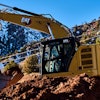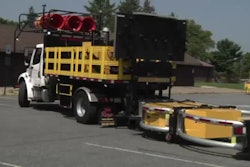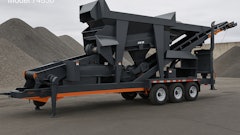When I first heard the term “driverless car,” images from Stephen King’s horror movie, Maximum Overdrive, popped into my head. But it seems that this concept, which was once just an idea of science fiction, is quickly becoming a reality. Have you seen the Google driverless cars zipping down the freeways? The future of transportation is happening now.
Driverless (a.k.a. self-driving, robotic, autonomous) vehicles are designed to sense their environment using techniques like radar, GPS, computer vision and remote-sensing technologies like LiDAR and navigate without human input.
Advanced control systems interpret sensory information to identify appropriate navigation paths, as well as obstacles and relevant signage. Some autonomous vehicles update their maps based on sensory input, allowing the vehicles to keep track of their position even when conditions change or when they enter uncharted environments.
These vehicles offer several potential societal benefits like reduced traffic fatalities and increased mobility and independence for people with disabilities. It’s estimated that self-driving cars could reduce the annual 30,000 road fatalities and 2 million injuries in the United States by up to 90 percent. The costs of those traffic accidents and the road congestion they cause, in just the 99 biggest U.S. urban areas, amounts to nearly $300 billion per year, according to the American Automobile Association.
California, Nevada, Florida and the District of Columbia, are all currently setting ground rules for self-driving cars on the road. New laws will have to take into account liability issues, zoning, parking and idling, and much more. Already, a pilot project deploying driverless cars on short, predetermined routes is underway in 12 European cities.
There is little doubt Google’s driverless car and other technologies under development by manufacturers will transform the future of U.S. transportation. But, how will these innovations impact the design and construction of highways and bridges? Driverless car technology could be ready for the general public in the next decade. Will the public agencies that manage these transportation networks be prepared?
Executives from IBM, Microsoft, the Automobile Manufacturers Alliance, public and private sector transportation construction professionals, and other thought leaders will explore these issues this October during the American Road & Transportation Builders Association’s (ARTBA) Dr. J. Don Brock TransOvation Workshop, held in San Jose, CA.
This year’s theme is “Where Technology Meets the Road.” World-class innovators will lead attendees during interactive workshops, where they will identify the design, building and management challenges posed by self-driving cars and other innovative technologies. Attendees will break into groups and be tasked with creating a blueprint to help the transportation construction industry meet these challenges.
If you’re interested in learning more about this technology and how it will affect you as an asphalt contractor, be sure to sign up for this workshop. For more information or to be part of this discussion, visit transovation.org.



















